Miniature roses: care
During the summer, miniature roses require care with regular abundant watering and feeding. Caring for roses in the garden includes at least 3-4 feeding. In the first half of the growing season, it is necessary to apply nitrogen fertilizers, in the second - phosphorus-potassium fertilizers. After removing the shelter and pruning in early spring, you need to fertilize with urea or ammonium nitrate and repeat the procedure as the shoots with leaves grow. After the buds appear, they are fed with a full mineral fertilizer.
Potassium nitrate and superphosphate should be added in August. The soil around the bushes must be constantly kept loose, preventing the formation of a crust that prevents air and moisture from reaching the root system.
Miniature indoor roses require maintenance in a well-lit place all year round for at least 8-10 hours a day. To maintain the required humidity level, you need to spray the leaves from the underside 1-2 times a day. The leaves should be washed twice a month to prevent parasitic infestation. In the warm season, you need to provide the plant with access to fresh air.
You can start feeding the indoor culture 1.5-2 months after rooting or transplanting with mineral fertilizers containing potassium, phosphorus and nitrogen. As a fertilizer, you can use wood ash - potassium in its composition almost does not contain chlorine harmful to roses.
Even good care will not be able to protect plants from diseases and pests. It is necessary to constantly monitor the plantings and take action at the first sign. Most often, the culture is affected by spider mites and aphids, which suck the juices from the tissues of leaves and buds, which leads to their drying out and falling off. With a weak lesion, treatment with colloidal sulfur powder will help. With strong - spraying the bushes with a solution consisting of 200 g of laundry soap and 20 g. copper sulfate dissolved in 10 liters of water.
Rust infects stems and leaves. If rusty brown spots are found, the bush must be treated with a Bordeaux mixture, and the affected parts must be removed and burned.
The history of the appearance of miniature roses, botanical description
The story of the appearance of miniature roses is a rather fascinating story. It originates from the distant past. In 1810, the first tea roses were brought to Europe from the Chinese gardens, which quickly gained great popularity in France. But, over time, the fashion for this plant began to fade, as the flower was sick and some of its varieties in their original form were very difficult to take root.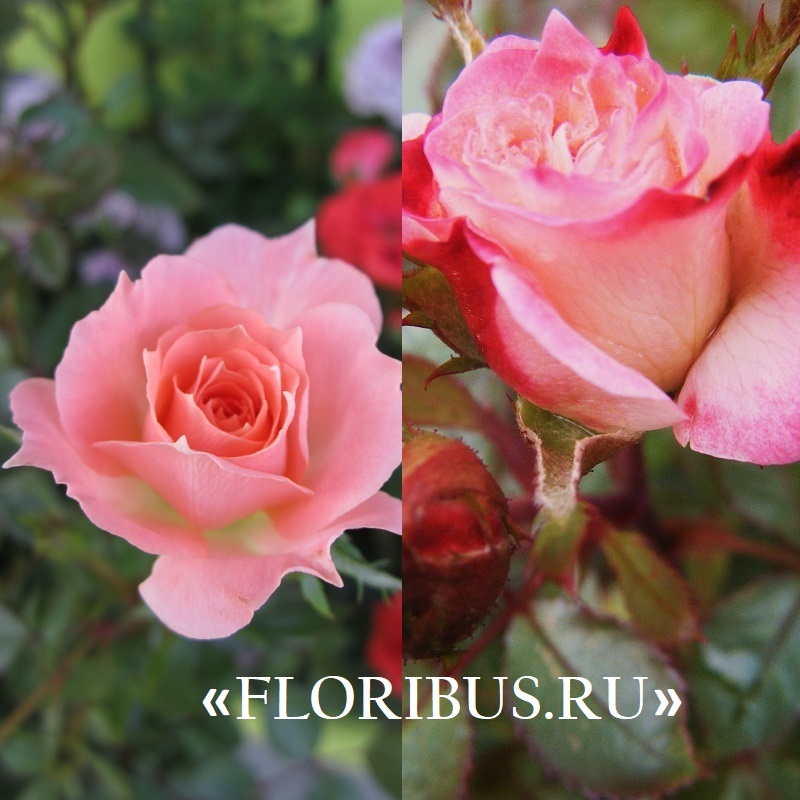
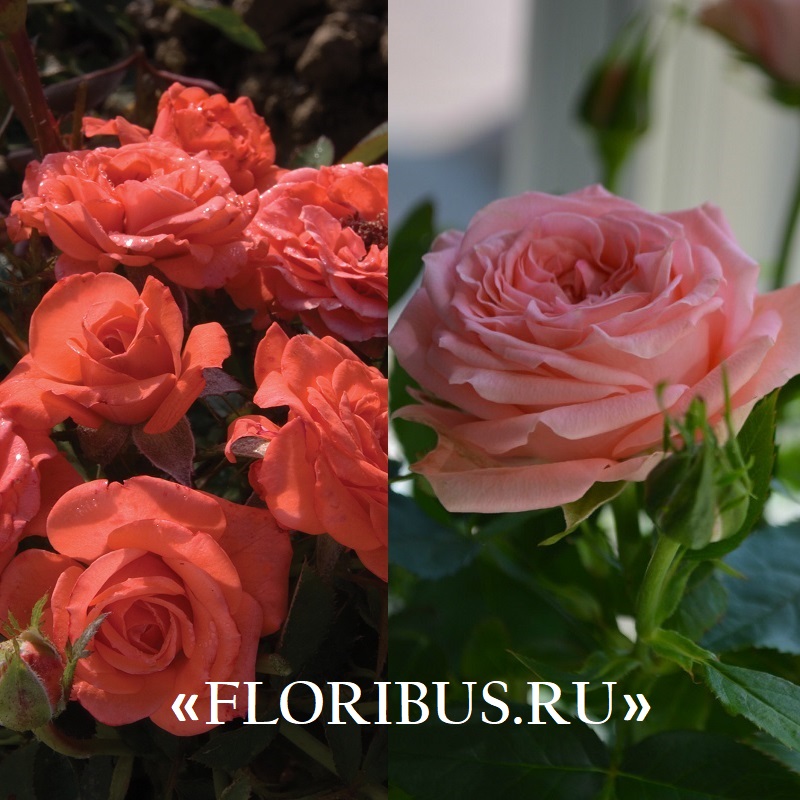
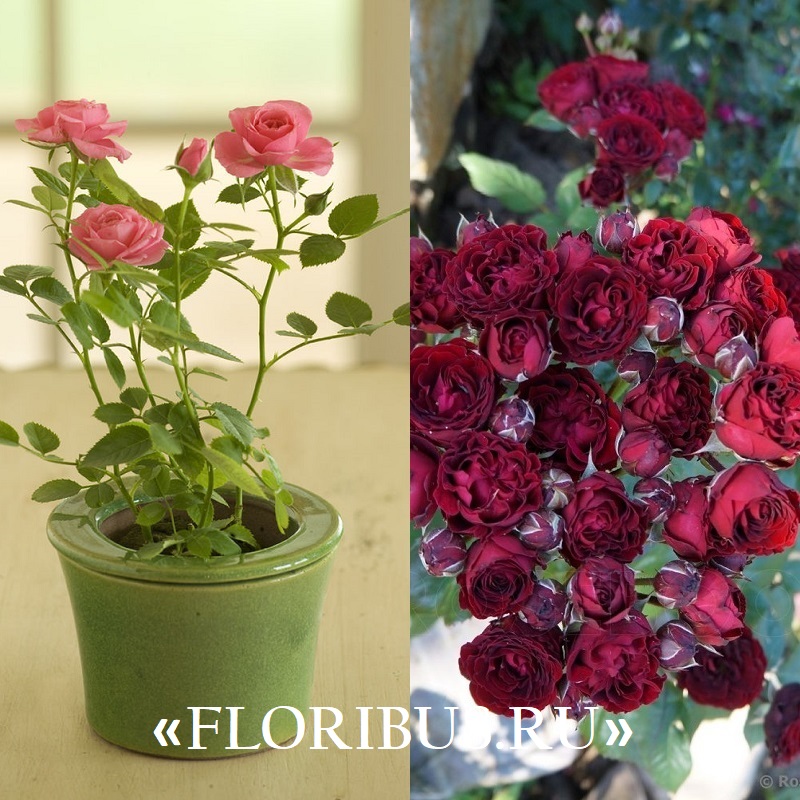
In the early stages, gardeners did not understand that the rose is a rather picky plant and they tried to accustom it to rather harsh climatic conditions and sometimes aggressive soil. In the end, the Chinese flower was noticed by Dr. Rouletti, who incidentally first created a complete botanical description of the miniature rose and obtained by crossing the hybrid "Ruletti", taken as the basis of many modern species and varieties. Thus, a new wave of fashion for this plant has gone.

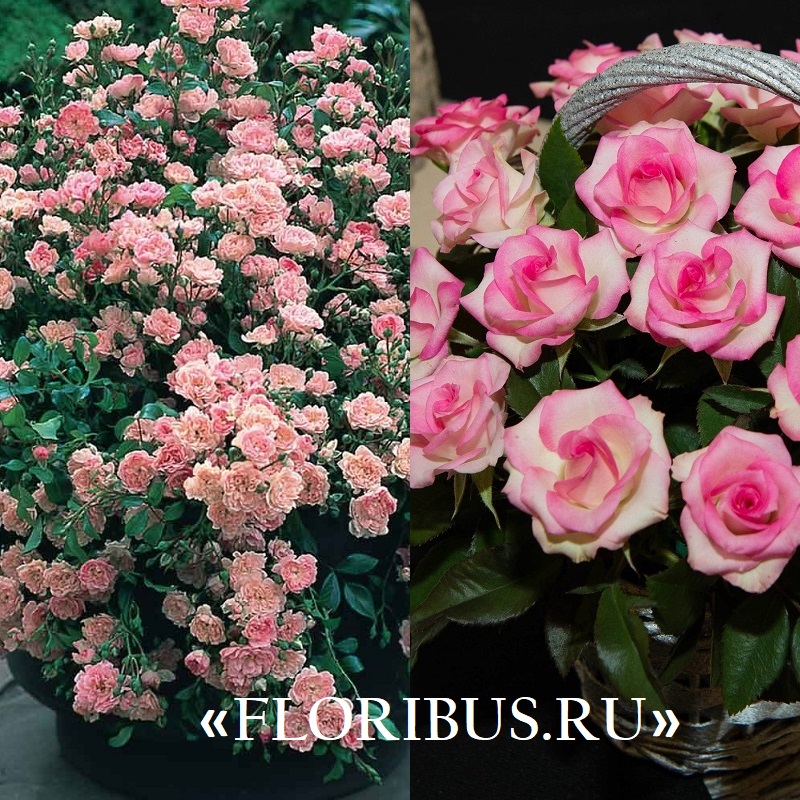
After the appearance of a new, less picky, hybrid in Switzerland, Dutch breeders became interested in the miniature rose, who created many interesting options for the garden and for indoor growing of bushes with a variety of flowers. Thus, many of the types of roses have come down to our times since 1918, you can see some of the classic "basic" varieties in the photo below.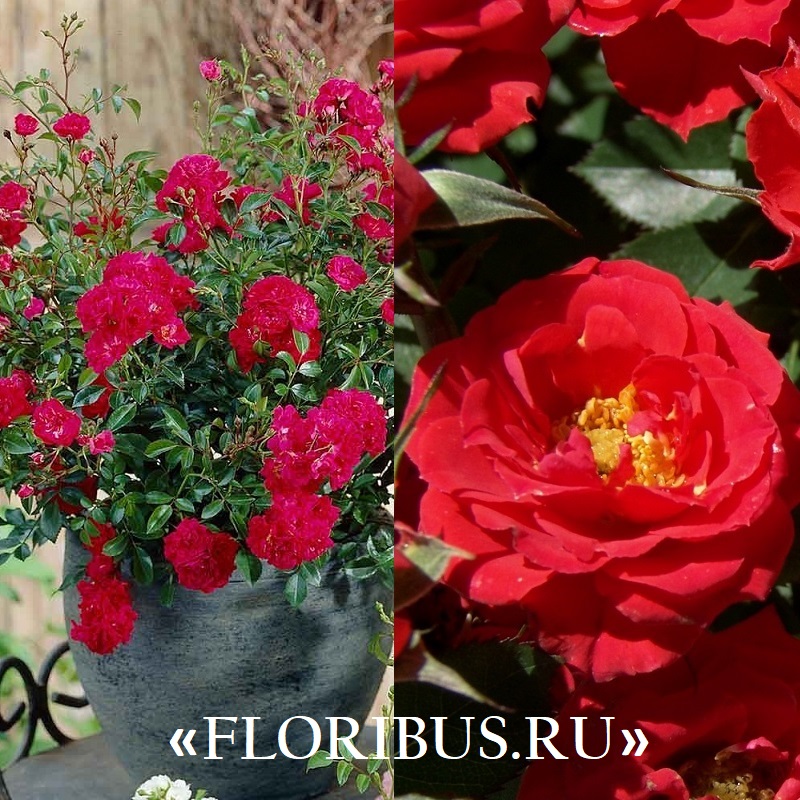

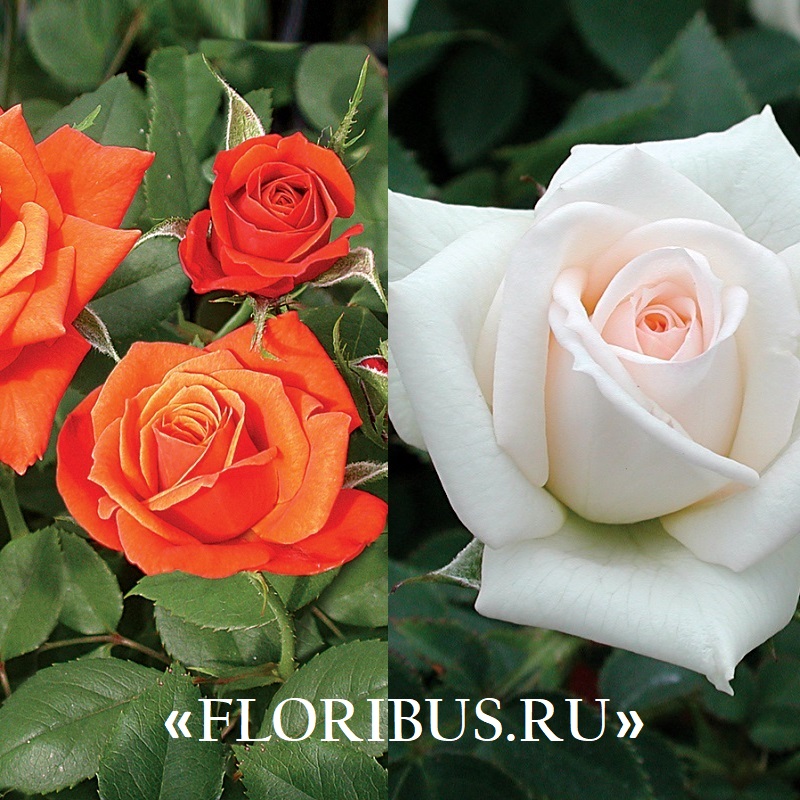
The shrub has rather flexible, often woody shoots with thorns. Even with a growth above 45 cm, which is really a rarity, they do not fall or spread over the soil surface.They have leaves of a dark green shade with jagged or serrated edges, their color depends on the hybrid and the species to which the rose variety belongs. Some may have small thorns on the inner surface of the leaf.

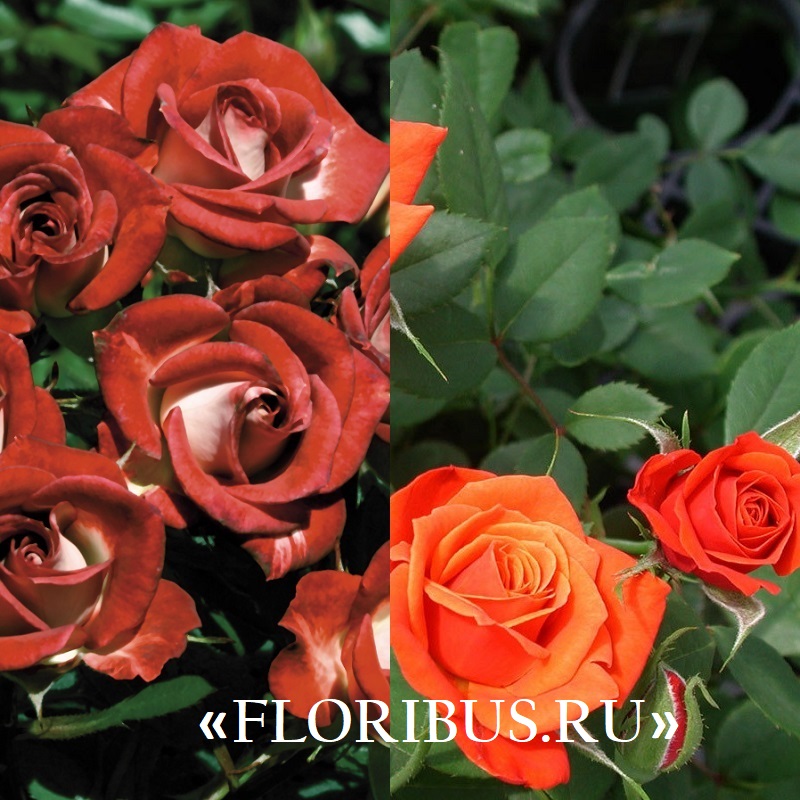
As for the flowers, they are most often 1.5-2 cm in diameter, but in some cases they can reach 5 cm. They are formed by petals in the form of cups. At home, as a houseplant, miniature roses can bloom all year round, but most varieties require wintering at low temperatures so that the plant can rest and gain strength. If you grow miniature roses as a garden shrub, then it will bloom from early or mid-summer to late autumn. There are rare species in which single flowers are formed on the shoot, most often these are inflorescences of 1-4 buds.
Depending on the variety, double and not very flowers of completely different shades may appear. By the way, the rarity of the hybrid itself depends on the color of the bud; there are collectible miniature roses that are quite difficult to get and even more difficult to grow at home. The smallest flowers, botanists note in the Yellow Bentham variety with yellow inflorescences - its flowering can be observed in a garden with a mild climate until late autumn, but for now you can just look at its photo.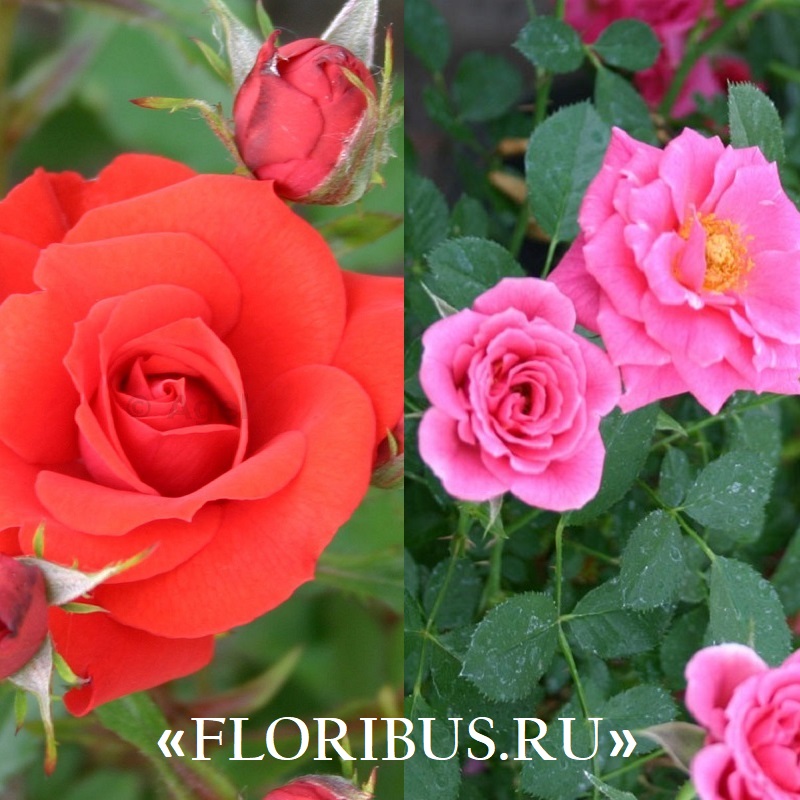
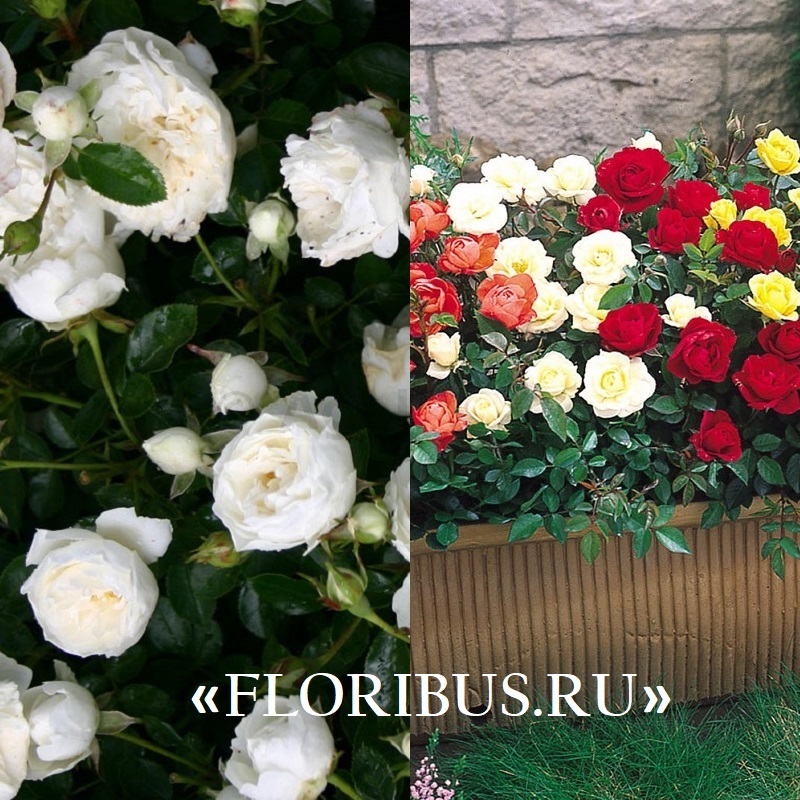
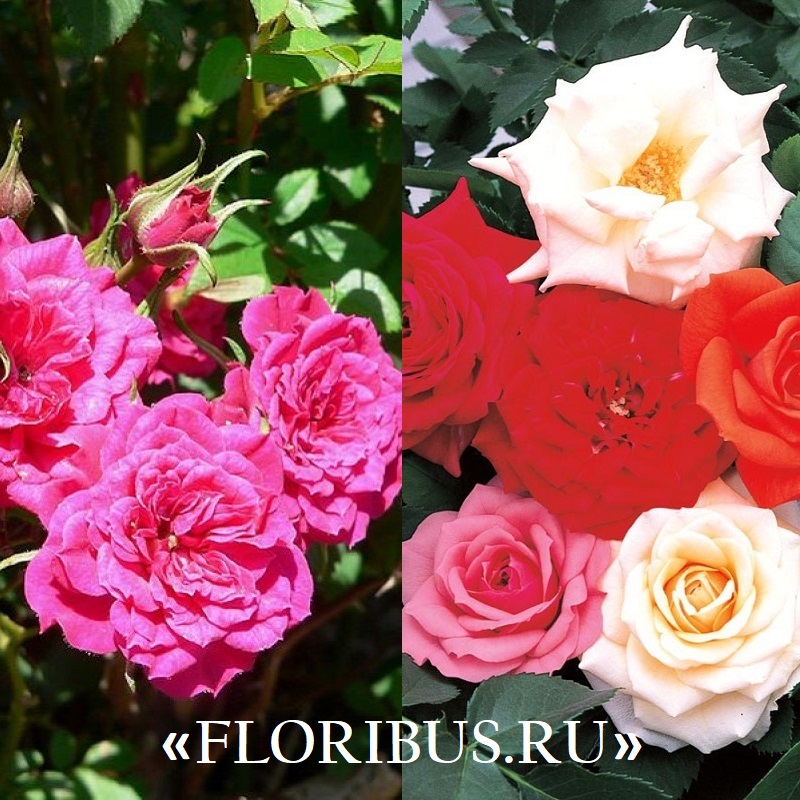
Fertilization and reproduction of miniature roses
Experts advise to feed the culture according to the following scheme:
- ammonium nitrate or urea - in early spring after cleaning the shelter;
- the same fertilizer - after 2-3 weeks;
- complex mineral mixtures - after the appearance of the first buds;
- potassium nitrate (superphosphate is possible) - in August.

Such a rose is propagated only by cuttings:
- pick up strong shoots with 3-4 buds;
- make a cut at right angles above the upper kidney, at 45 ° at the lower one;
- soak the cuttings in Epin's solution (100g / l) for 8-10 hours;
- prepare the container;
- lay out the drainage, pour in a fertile substrate;
- pour a layer of sand about 1 cm on top;
- root the cuttings, water and cover with foil.
For the twigs to take root, at least 1 month must pass. During this time, occasionally check the soil, not allowing it to dry out. After a month, the cuttings can be ventilated from time to time. Growing a miniature rose is fun and not too difficult. By adhering to the basic guidelines, you will decorate your garden with amazing flowers in different shades.
Dwarf roses
The birthplace of miniature roses is China. Now breeders have bred more than 100 varieties. All of them are distinguished by beautiful small flowers of various shades that exude a subtle aroma or do not smell at all.
Benefits of dwarf roses for decorating gardens and loggias:
- The bushes are compact, up to 40 centimeters in height, the stems do not fall to the ground.
- Most varieties are frost-resistant, so they are suitable for decorating a flower bed as a perennial.
- Flowering continues from May until frost, old buds are constantly replaced by new ones.
- Flowers are miniature, varied in shape and color.
- Among dwarf roses, there are varieties with both one flower on the stem and many, which allows them to perfectly fit into landscape design.
- Climbing and creeping species of mini roses have long (up to 5 meters) shoots, flowers are small, up to 4 centimeters in diameter, but almost the entire bush is strewn with them. The flowering period depends on the selected variety. This is a great option for creating hedges and arches.

Small roses
Growing
Care
When growing miniature roses outdoors, you should choose a place with good sunlight, protected from wind and drafts.
In the summer, you need abundant watering and regular feeding four times a year: early spring, late spring, early and late summer. At the same time, nitrogen, phosphorus, potash fertilizers, urea, ammonium nitrate, superphosphate and complete mineral fertilizers are used.
Loosen soil and weed regularly. You can also mulch the soil.

Spray in the morning, avoiding excessive moisture.
Prune in summer, spring and fall. In the summer, remove wilted flowers, unnecessarily long shoots, withered leaves and flowers, dried branches. In the middle of spring, small, thin, dry, intertwined branches, shoots that grow inward are removed.
The rest are left fifteen centimeters each, cutting off the rest. In autumn, only strong shoots are left, which are greatly shortened. Everything else is deleted.
In autumn, strong shoots are pinched, loosening, watering and fertilizing are reduced. With the onset of night frosts, all leaves and unripe shoots are gradually removed, then the plant is covered with spruce branches and foliage with a layer of at least ten centimeters. In a thaw, the rose needs to be ventilated.
In the spring, the spruce branches that cover the bush are gradually removed as it warms. After complete thawing of the soil, it is removed altogether. The rose is fed and processed to prevent disease and protect against parasites.
It is easier to care for a houseplant.

To do this, the bush must be in a bright sunny place every day for at least ten hours a day.
Twice a day, the leaves of the plant are sprayed from the back to maintain the humidity level that the rose needs.
Leaves are washed twice a month in order to prevent diseases and parasites. When it's warm outside, the rose can be moved outside.
Watering
Watering should be abundant, once every five days, while it is better to use natural water, or, in extreme cases, settled. The temperature of the liquid used for irrigation is eighteen degrees Celsius in winter and twenty-two degrees in summer.

Top dressing can be started two months after rooting. In this case, potash, phosphorus, nitrogen mineral fertilizers, as well as wood ash are used.
The soil
For planting in the garden, it is better to choose loamy soils, the acidity is weak, well moistened. If there are none, then the soil can be improved. If the soil is dry and sandy, two buckets of earthen mixture are added to each hole, which includes humus and clay. If the soil, on the other hand, is too moist and clayey, the mixture should consist of two buckets of sand and humus per planting hole.
To grow roses in a flower pot indoors, you can prepare a nutritious earthy mixture yourself as follows. The bottom of the pot or other planting container is covered with a layer of polystyrene, on top of which moss or charcoal is placed in a layer of one centimeter for drainage.
River sand, humus, peat and earth are mixed into a homogeneous mixture, which is poured into a pot. The planting place for growing a room miniature rose is ready.
Reproduction

The most common and easiest way to propagate a plant is by cuttings. For a room rose, the best time for propagation by cuttings is the season from early March to late September. For a shrub grown in open soil, this time will be from early May to late August.
Cuttings should only be taken from healthy shrubs. They should be taken from shoots that are less than one year old, using the middle part of the shoot. The handle should have at least three buds, its length is usually ten to twelve centimeters.
First, the stalk is placed in wet sand, deepening four centimeters and covered with glass to maintain moisture. After the shoot takes root (this usually happens after two weeks), it is transplanted to a place where it will grow constantly: in a garden or a pot.
Miniature roses in the garden and apartment: the history of the species
The history of miniature roses began in China, and from there they were brought to Europe in 1810. This is a historically recorded fact, but they did not receive wide distribution in the 19th century, their triumphal procession began only in 1918, when Dr. Roulette found a miniature rose bush in Switzerland, which he subsequently multiplied and called the Roulette rose.It was she who became the ancestor of almost all modern varieties of miniature roses.
Since 1823, miniature roses in the garden have become very popular in France for decorating parterres. They were also used to decorate winter gardens. Over time, interest in them waned. Around 1910, miniature roses in pots were re-grown in large numbers. About 20 species of miniature roses were distributed, in Russia they were in the collection of the Imperial Botanical Garden, which was led by the outstanding botanist E. Regel.
In 1940, Spanish and Dutch breeders began to hybridize miniature roses on a large scale. To obtain new hybrids, they used low-growing roses of other groups. Thanks to interspecific hybridization and selection, a number of varieties were obtained that retained the main characteristics of miniature roses, but received a bright and varied color, as well as an elegant flower shape.
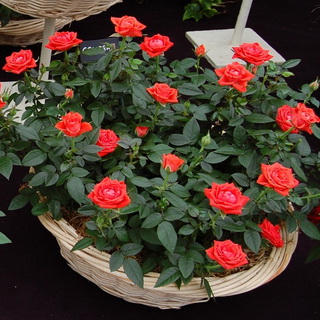
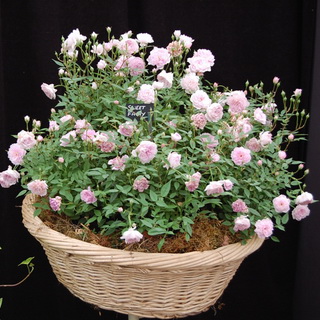
These little beauties are really small - their height is only 10-3 0 cm, but the shoots are abundantly covered with small dark green shiny leaves. Roses can have thin, durable thorns or be smooth-bore. The flowers are small - 1-3 cm in diameter, usually double, cupped, solitary or collected in apical inflorescences. Flowering is abundant and long - lasts almost without stopping all summer.
Own-rooted miniature roses do not give root growth, so they are propagated by green cuttings. They do it in the room in March-September, on the street - in May-August.
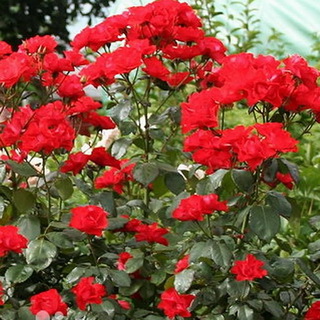
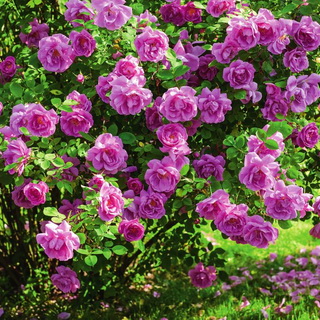
The descendants of the Roulette rose today are grown in a variety of forms: there are bush (considered classic), and trellis, and ground cover, and standard, and climbing. Therefore, their use is very diverse. Miniature roses are grown mainly as potted plants, but sometimes they can be seen on flower beds, and in flower beds, and in borders, and in garden groups, and on alpine slides.
Growing at home
Roses are not indoor plants, they are comfortable outdoors. However, they are successfully grown in an apartment.
At home, miniature roses of those varieties are grown in which the height of the bush does not exceed 25 cm. For indoor floriculture, self-rooted roses are used. The vaccinated are not suitable, their roots grow strongly.
Some advise to arrange a two-week "quarantine" for purchased miniature roses. Set them apart from other plants. On the first day, spray with epin (2 drops per glass of water). So the rose will more easily bear the stress of transition from greenhouse conditions. Then water and spray. Only then transplant.
But practice shows that a purchased rose does not last for these two weeks. As a rule, her lower leaves are already damaged by a fungal disease. From them, the disease goes higher. Increased dryness also has a detrimental effect. The stems turn black, the leaves fall, the rose dies.
Usually, not one bush grows in a purchased pot, but several. That is why it looks so attractive in the store. But they are cramped there, there is not enough food. Therefore, unfortunately, the miniature rose brought from the store needs to be cut off. Remove the bottom leaves, flowers and buds, weak shoots. Then the plant is removed from the store pot, divided into bushes, and each is planted in its own pot.
When planting a rose, expanded clay is placed on the bottom of the drainage pot. Then the earth is poured. Better a ready-made soil mixture for roses, but you can prepare it yourself:
- sod land - 2 parts;
- humus - 2 parts;
- sand - ½ part.
After mixing all the components, steam the mixture or spill it with boiling water.
The pot is filled with earth, one or two centimeters short of the edge. Then watered so that water flows out of the drainage hole. For prevention, it is good to dissolve phytosporin in water. It is an antifungal agent.
After completing these activities, the rose is placed on the sill of the southeast or southwest window. Southern ones don't fit.In summer, it is too hot there, the roots dry out and suffer, lose their ability to supply the plant with nutrients.
To prevent the roots from overheating, the pot is placed in a white planter or wrapped in foil. If the earthen lump is still overheated in the sun and dried out, then it must first be cooled, and then watered.
After transplanting, the roses are not fertilized for two to three weeks. A diseased or pest-affected plant is never fertilized.
If the air is very dry, a spider mite may appear on the rose. Acaricidal drugs are used against it. They are processed according to the instructions (every three days). With this preparation, you need not only to spray the leaves, but also to shed the earth. You can use folk methods: infusion of garlic, a solution of laundry soap. But they are not as effective.
For powdery mildew and other fungal diseases, fungicidal preparations of systemic action are used.
Avoid drafts and water properly. An overabundance and a lack of moisture are equally harmful for a miniature rose. Watering is rare, once every 4-6 days. In this case, the water must completely saturate the earthen lump. From an excess of moisture, the earth will begin to bloom, and a smell will appear. Having found these symptoms, urgently save and transplant the rose. In the fall, watering is reduced.
Indoors, the rose suffers from dry air. From this, the leaves dry and fall. Therefore, during the growing season, it must be sprayed daily.
To increase the humidity, the rose is placed on corks from under plastic bottles in a tray with water. Then the moisture will be constant, and the roots will not rot.
To have a beautiful rose, it needs to be fertilized frequently. Before the appearance of buds - twice a week, during the budding period - once a week. In the fall, the number of fertilizing and watering is reduced. In winter, they do not water or fertilize at all.
Before winter, the rose is pruned, leaving twigs with five buds. Trimmed to the outward-facing bud. Otherwise, a new shoot will grow inside the bush. Take out to a cold place (5-12 degrees Celsius). There the rose stands quietly winters. In spring, the temperature rises, the sunny day lengthens, the rose begins to grow. In March, it is transplanted into a larger pot.
In order for a rose to delight with flowering for a long time, it needs:
- lighting;
- regular watering;
- regular feeding;
- regular transplants.
In summer or spring, it is good to take the rose out into the open air. Just do not put in direct sunlight.
Miniature roses in winter
The vast majority of garden rose varieties are damaged during frost. Overwintering depends on the winter hardiness of the variety, the condition of the plant, its readiness for winter, weather conditions and the method of shelter. Miniature roses need shelter in winter and must be prepared for winter. To do this, it is necessary to carry out a number of agrotechnical measures that will significantly increase the winter hardiness of plants:
- from the second half of summer, it is necessary to completely exclude fertilizing with fertilizers containing nitrogen, which contributes to the formation of a green vegetative mass and delays the growing season;
- in August-September, feed with potassium-phosphorus fertilizers, which stop the growth of shoots, promote the ripening of wood and increase resistance to cold;
- at the beginning of autumn, pinch the ends of the growing shoots;
- loosening and watering the soil to a minimum;
- after the first frosts, you need to gradually cut off the leaves (first on the lower ones, then on the other branches) and remove the unripe shoots.
Types of miniature roses
In our time of active international communications and simple online shopping, you can order any kind of miniature rose you like from any country in the world. The cost of a seedling is $ 20-50, delivery takes about a month.
Miniature Peach Rose Amber Sunblaze - Amber Glitter
Bright peach-orange miniature rose. It blooms with individual roses and inflorescences. When the flowers fully bloom, shades of yellow appear on the inner petals. The foliage is semi-glossy dark green. There is no aroma.
Miniature light pink rose LAVENDER JEWEL - Lavender jewel
Exceptionally spectacular bush with miniature roses of light pink-lilac color. It is considered one of the best types of miniature roses. A distinctive feature is a very abundant flowering and a delicate aroma.
Miniature Purple Rose Diamond Eyes - Diamond Eyes
Dark purple rose with a contrasting white center. This type of rose is native to America. Blooms in inflorescences. Bushes are short, dense and compact. The foliage is glossy, dark green in color.
Perfect for flowering hedges, garden flower pots and any garden bed. Has a very pleasant, strong aroma.
Miniature pink rose CRI CRI - Cree Cree
Miniature rose bushes with numerous inflorescences. Roses are very bright, deep pink. The large number of petals in the rose create a unique, very fluffy flower with unusually dense petals. Roses of Kree Kree bloom and bloom for a long time. They have a light aroma. The height of the bush is 30-40 cm.
Miniature red rose GLOIRE DU MIDI (Dwarf Polyantha)
Miniature roses of bright scarlet color. They bloom with numerous inflorescences. Compact bushes up to 50 cm high. They have a light aroma and abundant foliage.
Miniature Pink Rose Magic Carrousel - Magic Carrousel
These small colorful roses bloom profusely. The color of the petals is red-white or pink-white. Roses bloom in small inflorescences. The Magic Carousel is an American rose variety that was bred in 1973.
Seeds. Rose "Garden scent", multi-flowered, mix, 0.03 grams
- Packed in: color bag
- Store code: 1757667
- Estimated number of working days before shipment of goods: 1
* Prices are indicated in Russian rubles including VAT
** Cumulative and bulk discounts are calculated when placing an order.
Germination rate: 83%. A delightful mini shrub variety created specifically for growing from seed for hobby gardeners. A compact plant with a height of 20-30 cm. Leaves are small, dark green. During the flowering period from June to September, the bush is covered with semi-double flowers from bright pink to white flowers. This plant is perfect for group plantings, patios, balconies, containers, borders, flower beds, alpine beds. Agricultural technology: rose is a warm and light-loving plant that needs loamy soils rich in humus. It blooms best in hot and dry summers. Sowing from March to May to a depth of 1-2 cm. Germination at a temperature of 15-20 ° C for 7-15 days, crops are mulched with peat or humus. After 6-8 weeks, when the plant reaches a height of 10-12 cm, it can be planted in a permanent place on the street or in a container. In summer, seedlings are fed with mineral fertilizers (we recommend using the complex mineral fertilizer "AELITA-TSVETOCHNOE"). The rose needs periodic feeding and watering, in addition, young plants must be covered for the winter.
in stock (can be shipped very quickly)
More details 
Mini roses (indoor), the secrets of growing
So, when buying, I pay attention first of all to the scent of a rose, even if it is barely audible, I know that it can develop later. At the same time, the state of the rose can be anything, everyone survives))) At home, I immediately drag it into the bath and drain the water until it is hot enough - at least 50 degrees and thoroughly rinse the rose and spill the soil, if this is not done, the weak plant can bend before we we will transplant it
Then, on the Internet, I look for the next good days for transplanting, it is best if the moon is growing in a scorpion, but other fertile signs are also suitable. I take the usual universal soil for roses, only add the chopped banana peel to it. Banana contains a lot of potassium necessary for flowering, moreover, it decomposes very quickly and after a couple of months you will not find a trace of it.You can also water the roses during flowering with banana peel infusion, just do not forget to periodically feed the roses and nitrogen, otherwise it may turn out like once with me - all roses are in flowers and without leaves: a5: After transplanting the rose, I spill the rose again with a hot shower, it allows do not cut the flowers and let the rose bloom naturally. Such a shower will not hurt from time to time, it is great stimulating, especially when you see that the rose begins to sulk.
I hope I'm not the only one who has something to share in growing them
__________________ I wish everyone happiness and a house with a piece of land.
Every failure is a step towards success.
There is a sun in every person. Just let it shine. Socrates
.
Mini roses at home
Planting young bushes in a pot is carried out at the same time as for a dwarf garden rose. The side is also east, and the pot should be large. The soil must be mixed from 2 parts of turf, 2 parts of humus and 0.5 parts of sand. The composition must be poured with boiling water, steamed, and only after that you can start planting:
- Lay expanded clay or other drainage at the bottom of the pot.
- Fill 1/3 of the volume with potting soil.
- Pour it so that water flows from the holes at the bottom.
- Place the rose bush in a pot, cover with earth so that 2-3 cm remains to the brim.
- Compact the soil a little.
After that, the rose can be taken out on the windowsill, now the bush should take root. Watering roses is carried out 1-2 times a week as the topsoil dries out. Moistening should be exactly the roots, that is, abundant and to the full depth. The best time to water is before 10:00 or in the evening before sunset. The water should be settled, without impurities.
Note! When watering is carried out during planting, an antifungal agent can be added to the water. Feeding flowers of small roses is carried out after each flowering wave
In the spring, they need nitrogen, phosphorus and potassium. When preparing for winter, fertilization must be stopped so that intense flowering or foliage does not start.
Feeding flowers of small roses is carried out after each flowering wave. In the spring, they need nitrogen, phosphorus and potassium. In preparation for winter, fertilization must be stopped so that intense flowering or foliage does not start.


